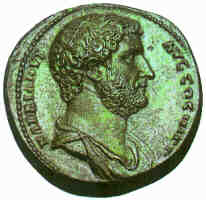
I have to apologize for my bad English, perhaps my English speakers visitors go straight away in seconds (only 2 seconds this time) because of my English… I noticed that my statistical site reports the visit time according to the reader’s time and because my readers are all over the world and use very different times (GMT, GMT+ …) I find my last visit enlisted at 11.30 a.m. (Central Europe Time) and the previous visits from abroad at 12.30! … That’s the thing! And now I’m newly sending a message in order to check the web, searching for readers and, I’d highlight, for readers interested in Italian language or in Italian culture. Now I’d tell you something interesting about Rome photos, there’s a site
(http://www.photoroma.com/index.php) where you can download free photos not only of Rome but also of many others Italian cities, I just checked this site and it was well worth the effort. It’s not a tourist-oriented site, it’s a roman people oriented site! You can find there something interesting about “madonnelle romane” (the Madonna’s images at the corners of buildings) end also about the history of Rome, from the Italian corner. … But the site, which gives also an essential description of every photo, is in Italian… that’s why you’d do better learning Italian at list as I can read English!
From now on I’ll put on my posts some photographs downloaded from “photoroma” and I’ll tray to explicate what they are about, in my bad English.
Now we start from Sant’Angelo Castle (you can see it in the photo). The architect Decrianus built this monument when Adrian was emperor in 135 a. C. and the work ended in 139 with Antoninus Pius. Called also Hadrianaeum (the monument or the tomb of Hadrian) it’s very big, on the top of a square base (84x84 m.), there was, and there is now, a cylindrical construction (64 m. of diameter), of travertine (an Italian and typical roman marble) and “lava” stone, and a “tumulus” (a little hill which doesn’t exist no more) of earth, Etruscan style, cultivated as a garden. Inside a helicoidal “rampa” (climb), still existing, and a rectilinear gallery lead to the cell, in which the emperors from Adrian to Septimius Severus were buried, with their families.
But I called my site “Italian culture in pills” therefore now I’ll tell you something else about Adrian.
There’s a poetic fragment of emperor Adrian in the “Historia Augusta” (25,9) you have to know. The poet-emperor waiting for the death tells something minimal to his own soul, which is going to go in shadow places where smile isn’t possible:
ADRANI MORIENTIS AD ANIMAM SUAM. “DYING ADRIAN TO HIS SOUL.”
Animula, vagula, blandula,
Hospes, comesque corporis,
Quae nunc abibis in loca,
Pallidula, rigida, nudula,
Nec, ut soles, dabis jocos
Which to the English reader may see translated with all the spirit of the original:
Poor, little, pretty soul,
Guest and mate of my body,
You are going to go to neglected
And frosted shadow places,
You’ll no more make me happy
With your pleasing vein and humorous folly
Lake you where used to.
But you have to remember that Adrian was also an emperor and certainly not the champion of tolerance both in peace and in war! Poetry is not all the life!
Take care!



No comments:
Post a Comment